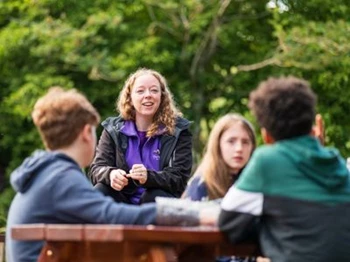Silver Award

For this award, students give a tour of the work that the school has done or is doing to protect the local environment. This could be part of an ongoing extra-curricular project or embedded within the school curriculum. This work should be sustained and maintained over the course of an academic year or longer. The students share their outcomes with the school community. This could be through a display, assembly, or piece in the school newsletter for example.
To apply for this you must have held the bronze award for 1 year. It is valid for 2 years from the date of accreditation.
- Schools completing the Silver Award will go into a draw to win a session for up to 30 students and a set of litter pickers or outdoor learning equipment for the school
Examples of things your students could do:
- Students create and maintain an allotment area at school for growing produce that is used in Science or Design Technology lessons, by the school canteen or given to families in the school or local community. Students make others aware of the outcomes of this project. The Parks Trust team could see this produce used in a lesson, attend an assembly delivered by the students to their peers, watch a video of this assembly or the students could repeat their assembly for The Parks Trust team at a later date. If a display has been created our team could view this display.
- Students maintain a wildlife area on a regular basis over a period of a least one year and monitor the use of the area in different seasons by carrying out wildlife surveys. They should share their outcomes with the school community for example by creating a display board or newsletter article to tell others about this. TPT could view the display or read the article. TPT staff could attend an assembly delivered by the students, watch a video of this or the students could repeat their assembly for TPT staff at a later date.
- Students conduct wildlife surveys on the school grounds and used this to create a detailed plan to show how they want to improve habitats for endangered species. They present their plans to school staff to try and get these changes implemented in the future (we understand not all schools have the resources to get practical changes made to their landscape immediately). This detailed plan should outline exactly what resources are needed and a timeline for activities. They could share the outcomes of their planning meetings with the school community by creating a display board or writing newsletter articles to tell others about this. They could invite our outdoor learning team to watch their presentation, view the display or read an article.







